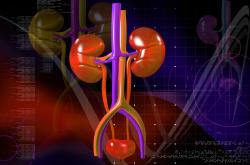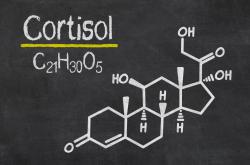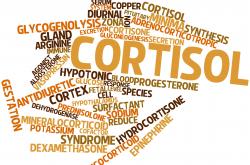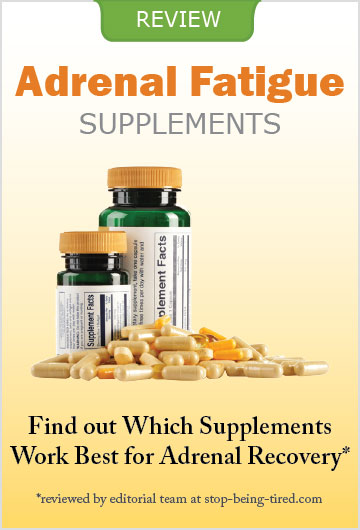A Closer Look at the Anatomy and Physiology of the Adrenal Glands
Knowing the anatomy and functioning of adrenal glands can be extremely beneficial for adrenal fatigue sufferers. This enables them to better understand the secretion of adrenal hormones, the way their body is constantly responding to different stimuli, and why adrenal health should be given top priority in any recovery plan.
Adrenal fatigue patients seldom receive the outside help offered to those who suffer from most other medical ailments. That is why they have little choice other than to learn everything they can about their syndrome. For many, that means educating themselves about diet, exercise, breathing and other relaxation techniques, and supplements.
Even after learning all that they can about those important topics, however, those patients can still be left with only a superficial understanding of their suffering. To fully appreciate how their body is responding to the various stressors in their lives, they also need to learn about the anatomy and physiology of the adrenal glands.
Adrenal Gland Anatomy
Each person has two adrenal glands that are collectively responsible for producing, monitoring, and delivering various hormones to meet the body’s demands. Within each gland are two separate areas: the inner section, which is referred to as the medulla; and the outer portion, known as the cortex – which is divided into several zones. In each of these distinct areas, a different hormone is produced for distribution throughout the body.
The glands are located close to the spine, extending just below the bottom rib and above the kidneys. The right and left adrenals are distinguished by their distinct shapes: the right gland has a pyramid shape, while the left looks more like a half-sphere. Weighing less than a quarter-ounce, each gland is about an inch high, roughly two inches wide, and a quarter-inch thick. However, their diminutive size stands in stark contrast to their outsized role in the maintenance of a healthy body.
Because of that critical role, the location of the glands is quite strategic. They are close to the body’s major artery, the aorta, as well as its primary vein – the vena cava. That design enables the adrenals to quickly deliver vital hormones in an efficient manner wherever they might be needed. It is also important to note that these glands are situated in close proximity to critical organs such as the liver, kidneys, and pancreas – all regions that require a rapid response when they need additional hormones to meet any emergency situation.
The Medulla
The hormones epinephrine and norepinephrine – also known as adrenalin and noradrenalin – are created within the adrenal medulla. These are the hormones that people are talking about when they refer to that natural stress reaction known as “fight or flight” since both work together to help the body quickly react to the most extreme stresses. During such times, these hormones race out into the body to open up the air passages and blood vessels while increasing the body’s heart rate. It’s a little like warming up a car on a cold winter’s day to ensure that it can operate efficiently – except in this case, the hormones are priming the body’s systems to deal with sudden and powerful stressors that might otherwise prove overwhelming.
If you’ve ever seen a video of someone lifting an otherwise immovable object during an accident or carrying someone twice his or her size out of a burning building, then you have seen these hormones at work. Together, they enable the body to sometimes perform great feats during moments of extreme pressure or panic. Both of the medulla-produced hormones do their work with the help of the cortisol produced by the adrenal cortex.
The Cortex
Whereas the medulla produces hormones for emergency situations, the adrenal cortex is charged with producing and managing the hormones the body needs for normal, everyday function. Because this part of the gland is responsible for producing different hormones, it is divided into three separate zones. In addition, there is another area between the fasciculata and reticularis often referred to as the interface zone. The three main zones are:
- the zona glomerulosa , which is responsible for secreting aldosterone
- the zona fasciculata, which produces cortisol
- the zona reticularis, which produces DHEA, DHEA-S, and progesterone. Most research also identifies this as the source of the sex hormones testosterone and estrogen
It should be noted that while many have long accepted that the sex hormones originate in the zona reticularis, recent proposals now lead many scientists to believe that those hormones might actually be manufactured within that interface zone listed above. Since our mainstream understanding is based on research using rodent test subjects, the fact that humans possess an interface zone between the zona fasciculate and the zona reticularis has spawned new debate about sex hormone production.
Regardless of whether one accepts that the cortex has four zones or three, there is no disputing its importance as a hub for hormonal production. Together, these zones manufacture more than four dozen hormones. Of those, around twelve are considered primary to good health since they are delivered regularly to the various areas of the body that need them. The others are only there to serve as components for the formation of the main hormones.
The Zona Glomerulosa
The outermost of those three zones is the zona glomerulosa, and it is responsible for secreting the major hormone known as aldosterone. This is the hormone that is vital for regulating the balance between potassium and sodium in the blood, the cells, and the fluid areas between those cells. An imbalance in these critical fluid levels is often the reason why so many adrenal fatigue sufferers experience otherwise inexplicable salt cravings.
The Zona Fasciculata
The zona fasciculata is found next to the glomerulosa, and releases the cortisol that is so critical for good health. This zone actually represents the most sizeable portion of the adrenal cortex, which makes sense given the importance of the hormone for which it is responsible. Cortisol fulfills a variety of roles within the body, including the maintenance of blood sugar levels through the metabolic process.
Zona Reticularis
The zona reticularis is responsible for helping to regulate and balance the production of the sex hormones, as well as progesterone, DHEA and DHEA-S. The latter group of hormones contributes to tissue repair, the balancing of cortisol levels, and regulation of the aging process. It is important to note that this zone is not solely responsible for estrogen and testosterone, since the bulk of that hormonal manufacturing process takes place in the gonads. This zone merely supplements gonad production, while providing each sex with the opposing sex hormones to ensure balance.
Adrenal Gland Physiology
The term “physiology” relates to the function of a thing, and in this instance it is the function of the adrenals that is of vital concern to anyone suffering from hypoadrenia. By understanding how the adrenal glands do what they do, it becomes easier to understand how those glands operate within the body. And that understanding can better aid patients as they strive to understand how their adrenals are reacting to those outside stressors and why they can become so easily overwhelmed by the demands stress places upon them.
Of particular concern to adrenal fatigue patients is the way in which cortisol is regulated. While this hormone is secreted as needed by the zona fasciculata, that zone does not actually regulate when the secretions occur. That regulation occurs from the body’s command center in the brain, and involves a complicated series of interactions that form a negative feedback system known as the HPA Axis.
Examining the HPA Axis
The HPA Axis is a term that describes the interactions between the hypothalamus (H), the pituitary gland (P), and the adrenals (A) – a series of interactions that are designed to regulate the level of cortisol in the body at any given point in time. As noted above, this regulation is accomplished using a negative feedback system similar to a home thermostat. In much the same way that a thermostat is designed to send signals through a relay switch to the furnace when the temperature deviates from a set norm, the body’s negative feedback system regulates cortisol.
In the case of the human body, the hypothalamus serves the same function as the thermostat. It is there to monitor the cortisol levels, while also comparing those levels to that needed by the body in any given set of circumstances. When you place various demands on the body, it is the hypothalamus that notices the change in need and sends out a signal that more cortisol is required to meet that increased demand.
The pituitary gland serves as the relay switch that sends this signal to the adrenals, which in turn serve as the furnace that releases the needed cortisol. Thus, when you exercise, or experience other forms of stress that impact you on a physical, emotional, or mental level, your body responds through this negative feedback system to ensure that you have the cortisol you need to deal with the increased pressure. Once that stress has passed, the hypothalamus relays a signal to return the cortisol levels to normal.
Cortisol Regulation
That explanation is only a broad example, however. There is much more to the process. And, since the HPA Axis is vitally important to the maintenance of physiological balance within the human body – a process called homeostasis, a more in-depth understanding of how cortisol is regulated can be very helpful for anyone who is trying to better manage issues related to adrenal fatigue.
When the HPA Axis does its work of regulating cortisol levels, it does so with the help of ACTH – Adrenal Corticotrophic Hormone. The pituitary gland is responsible for secretions of this hormone, and releases it when the hypothalamus directs it to do so. From there, it makes its way through the body to the adrenal cortex, and then directs the cells in all of the cortex zones to begin the process of producing whichever hormones are being summoned.
Until the ACTH enters the cells within the cortex, the process of hormonal production within any of the zones cannot begin. In keeping with the earlier furnace analogy, it is similar to the way the home’s furnace doesn’t being to release hit until the relay switch has finished transmitting the thermostat’s signal. Once the ACTH has bonded to those cells, however, there is a cellular enzyme reaction that causes the release of cholesterol that is used to produce the hormone pregnenolone – the first step in the production of every hormone that the adrenals produce.
Once that first hormone is manufactured, it is used by the zona fasciculata to create cortisone, which is then used to manufacture the needed cortisol. That critical hormone is then sent to the various parts of the body where it is needed to meet whatever demands the hypothalamus identified during its monitoring process. While this sounds like a lengthy and time-consuming process, it is important to note that the entire event occurs in only seconds.
The Negative Feedback Loop
Each and every moment of every day, the hypothalamus remains on alert for any sign of trouble. As the chief regulator for the body’s hormones, it continually monitors every internal and external threat to the carefully-crafted balance it works so hard to maintain. It communicates closely with its allies in the brain to constantly evaluate information about a variety of different factors that include everything from current energy needs to unexpected stress and even new sensory input. With that information, the hypothalamus makes a determination as to the exact amount of cortisol your body needs at any given moment.
When needed changes are identified, the hypothalamus sends out its hormonal minions to deliver messages to the pituitary glands. Chief among these messengers is CRF – a hormone otherwise known as corticotrophic releasing factor. This speedy hormone instructs the pituitary gland to release its own hormones in the form of ACTH, which then travel to the adrenals, as noted above.
This process is repeated thousands of times a day, as the body continually adjusts and readjusts the levels of cortisol available to meet life’s demands. Changes can be made for a variety of reasons, and can be based on virtually any internal or external factor, depending upon the severity of the circumstances. Some of these factors include external factors such as the temperature of the environment, data received in the form of sensory input like sights, sounds, and smells, and seasonal variations.
Internal stresses can also incite changes. Various thoughts can invoke a reaction, as can stress, the internal body temperature, the balance of various chemicals, hunger, blood sugar levels, and fatigue. More severe factors can include everything from infections, injuries, and sudden trauma, to emotional stressors such as depression, anxiety, or a feeling of helplessness. In any of these circumstances, the hypothalamus can choose to use its power within the negative feedback loop to initiate cortisol level changes.
It is helpful for adrenal fatigue patients to recognize that this secretion cycle is never consistent throughout the day. Instead, there is a pattern of natural highs and lows throughout any given twenty-four hour period, and the amount of cortisol, aldosterone, and ACTH that is secreted varies in accordance with that pattern. In healthy people, the highest levels of those hormones are seen at around eight in the morning. The low point of that pattern occurs in the period between midnight and four in the morning.
From the morning high, cortisol levels decrease throughout the day, spiking dramatically only after a meal or snack. That is not to say, however, that the decline from that morning high is steady; it is not. In fact, the entire day’s pattern is typified by sudden small spikes in those hormone levels. This is important to understand, since one of the worst things adrenal fatigue sufferers can do is to allow themselves to go too long without nourishment, since that tends to allow cortisol levels to become dangerously low. Regular meals and occasional snacks can assist these patients in maintaining a more consistent cortisol level throughout the entire day.
Why This Matters
For a healthy person, all of this information might seem mildly interesting on an academic level, but few would see anything of real value for their lives. Hypoadrenia sufferers, however, have no such luxury. For those patients, every bit of information they can glean about how their body works and why their adrenals are so vulnerable can be one more step they take on the road to recovery.
It is one thing to know that you need to make a series of lifestyle changes to begin a real recovery from your adrenal fatigue. It is quite another to gain insight into the way your adrenals and related systems work. With that added knowledge, you can better understand the important role your adrenals play within your body, and why it is so vitally important that you focus on returning them to normal function so that you can enjoy the full benefits of a complete recovery from this debilitating syndrome.
You might also be interested in:
- Adrenal Glands. http://emedicine.medscape.com/article/940347-overview
- Adrenal Glands: Function, Cortex & Medulla. http://study.com/academy/lesson/adrenal-glands-function-cortex-medulla.html
- 3. The Adrenal Glands. http://philschatz.com/anatomy-book/contents/m46684.html
- Endocrinology: An Integrated Approach. http://www.ncbi.nlm.nih.gov/books/NBK26/
- The Oxford Companion to the Body. http://www.encyclopedia.com/topic/adrenal_gland.aspx















.jpg)




Leave a comment